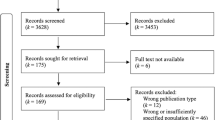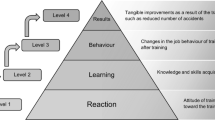Abstract
The first responder training sector presents crucial difficulties on adopting “future of work” online training principles because physical (muscle) memory is considered as important as cognitive memory. It is obvious that physical memory cannot be obtained by existing screen- and paper-based trainings. This paper presents a novel training framework for first responders that leverages augmented reality and virtual reality technologies. The framework incorporates novel design thinking processes that are implemented for the design of the training experiences. In addition, a qualitative and quantitative analysis of various metrics such as performance, time on task, accuracy and learning rate are developed to analyze the effectiveness of the proposed framework. A special use case of the emergency medical services called the ambulance bus is investigated and it is shown that the proposed training methodology improved the accuracy of the first responders by a factor of 46% and the speed on executing tasks by 29%.







Similar content being viewed by others
References
Ali A, Dafoulas G, Augusto J (2019) Collaborative Educational Environments Incorporating Mixed Reality Technologies: A Systematic Mapping Study. IEEE Trans Learn Technol 12(3):321–332
AR/VR Demo AmBus EMS team City of Austin (2019). https://www.youtube.com/watch?v=5PAr118_hSQ YouTube demo video. Accessed 24 February 2020
Daher S (2017) Optical see-through vs. spatial augmented reality simulators for medical applications. IEEE Virtual Reality (VR). DOI: 10.1109/VR.2017.7892354.
Forrester Total Economic Impact (2018) The Total Economic Impact Of IBM’s Design Thinking Practice. Study Commissioned By IBM.
Gibbons S (2016) Design Thinking 101. Retrieved from https://www.nngroup.com/articles/design-thinking/
G Han, et al. (2010) Effects of kinesthetic information on working memory for 2D sequential selection task. IEEE Haptics Symposium, pp. 43–46. DOI: 10.1109/HAPTIC.2010.5444680.
Heinrichs WL, Youngblood P, Harter P, Kusumoto L, Dev P (2010) Training healthcare personnel for mass-casualty incidents in a virtual emergency department: VED II. Prehospital and Disaster Medicine 25(5):424–432
Kang SHK (2016) Spaced Repetition Promotes Efficient and Effective Learning: Policy Implications for Instruction. Instructional Strategies 3(1):12–19
Koutitas G, et al., (2019) A Virtual and Augmented Reality Platform for the Training of First Responders of the Ambulance Bus. 12th International Conference on Pervasive Technologies Related to Assistive Environments. pp 299–302. 10.1145/3316782.3321542
Lankford A (2016) Public Mass Shooters and Firearms: A cross-national study of 171 countries. Violence and Crime 31(2):187–199
Leger E, Drouin S, Collins Luis D, Popa T, Kersten-Oertel M (2017) Quantifying attention shifts in augmented reality image-guided neurosurgery. Healthcare Technology Letters 4(5):188–192
National Centers for Environmental Information (2017) Billion-dollar weather and climate disasters. https://www.ncdc.noaa.gov/billions/events/US/2012-2017
Ouadoud M, et al, (2017) Educational modeling of a learning management system. International Conference on Electrical and Information Technologies (ICEIT).
Santos MEC et al (2014) Augmented Reality Learning Experiences: Survey of Prototype Design and Evaluation. IEEE Trans Learn Technol 7(1):38–56
Schenk E, Wetunge G, Mann C et al (2014) Epidemiology of mass casualty incidents in the United States. Prehospital Emergency Care 81(3):408–416
Schmidt MS (2014) F.B.I. Confirms a Sharp Rise in Mass Shootings Since 2000. New York Times. Retrieved from https://www.nytimes.com/2014/09/25/us/25shooters.htm
Sebillo M et al (2016) Training emergency responders through augmented reality mobile interfaces. Multimedia Tools and Applications 75(16):9609–9622
Squire LR, Zola SM (1996) Structure and function of declarative and nondeclarative memory systems. Proc Natl Acad Sci 93:13515–13522
Stansfield S, Shawver D, Sobel A, Prasad M, Tapia L (2010) Design and implementation of a virtual reality system and its application to training medical first responders. IEEE Presence Teleoperators and Virtual Environments 9(6):524–556
Sutherland C, Hashtrudi-Zaad K, Sellens R, Abolmaesumi P, Mousavi P (2013) An Augmented Reality Haptic Training Simulator for Spinal Needle Procedures. IEEE Trans Biomed Eng 60(11):3009–3018
Tabbarah M, Crimmins E, Seeman T (2002) The Relationship Between Cognitive and Physical Performance: MacArthur Studies of Successful Aging. The Journals of Gerontology 57(4):228–235
U.S. Fire Administration (2016) Fire fighter fatalities in the United States in 2016. Retrieved from, https://www.usfa.fema.gov/downloads/pdf/publications/ff_fat16.pdf
Vandierendonck A (2017) A comparison of methods to combine speed and accuracy measures of performance: a rejoinder on the binning procedure. Behavioral Research, Behav Res 49:653–673
Wilkerson W et al (2008) Using immersive simulation for training first responders for mass casualty incidents. Acad Emerg Med 15(11):1152–1159
Wuller H et al (2017) Augmented reality in nursing: designing a framework for a technology assessment. Stud Health Technol Inform 245:823–827
Yuan Y (2018) Paving the road for virtual and augmented reality. IEEE Consumer Electronics Magazine 7(1):117–128
Acknowledgments
The team would like to thank Commander Noble from Austin/Travis county EMS and our contacts at the City of Austin: Marbenn Cayetano and Dr. Ted Lehr; for without their help, this project would not be possible. We would like to also acknowledge the important feedback and research of the faculty team and researchers Dr. Vangelis Metsis and Dr. Mark Trahan. Finally, we would like to thank the student team: Clayton Stamper, Jose Banuelos, James Bellian, Dante Cash, Elija Gaytan, Victoria Humphrey, Shivesh Jadon, Chloe Kjosa, Lorena Martinez, Samantha Roberts, Kayla Shay Roebuck, Chaitanya Vyas, and Shashwat Vyas for their hard work and dedication.
Author information
Authors and Affiliations
Corresponding author
Additional information
Publisher's Note
Springer Nature remains neutral with regard to jurisdictional claims in published maps and institutional affiliations.
Rights and permissions
About this article
Cite this article
Koutitas, G., Smith, S. & Lawrence, G. Performance evaluation of AR/VR training technologies for EMS first responders. Virtual Reality 25, 83–94 (2021). https://doi.org/10.1007/s10055-020-00436-8
Received:
Accepted:
Published:
Issue Date:
DOI: https://doi.org/10.1007/s10055-020-00436-8




